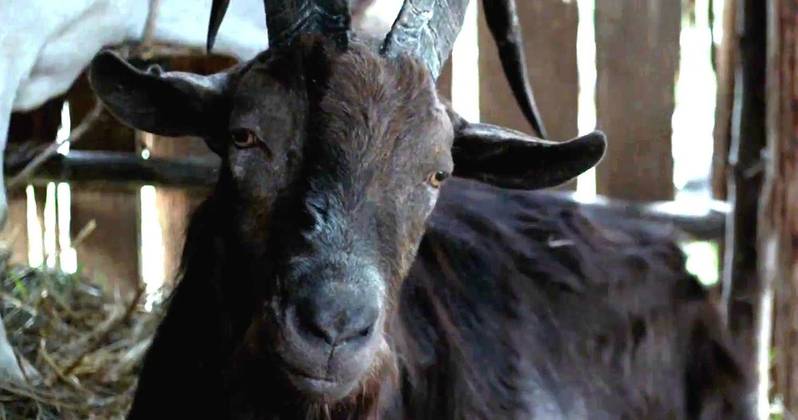Although Mark Kermode strains very hard, ultimately I think it's difficult to sustain the interpretation that the witchcraft is all happening inside the family's heads. The subtitle highlights that this is a "folktale" – where magic and fantasy are used as instructive metaphors. The fact that the witch preys on the tensions and divisions within the family doesn't mean it's an apparition that grows out of those tensions and divisions. Belief in witches doesn't create the witch. The roots of the family's downfall are deeper than that.
They are probably doomed from the beginning. The father finds the Puritan plantation too religiously lax for his tastes and chooses exile for his family. They are forced to eke out a miserable existence on marshy ground at the edge of a wood, and it doesn't go well. All the rigours of the faith don't stop the father William from lying to his wife – selling an heirloom to buy traps when the crop fails. His weakness is revealed when he implicates his children in the lie. The mother also wishes to basically sell the eldest daughter Tomasin into servitude, partly to remove a source of temptation for her younger son Caleb – a cruel separation for the two children.
The inflexibility of faith is the central problem. William realises too late that by casting out his family he was himself guilty of the cardinal sin of pride. A rejection of society is a dangerous thing, and the witch doesn't give him enough time to correct the error. Caleb's developing sexuality doesn't have a healthy outlet, leaving him open to the witch's temptations, and he dies in a rapture praying to Jesus in the most lascivious terms.
Tomasin's dilemma is the most interesting. She is the most powerless member of the family – patronised, overworked and at risk of being cast out. In a key early scene, she finds that the idea of being the witch gives her a taste of power for the first time, which she exercises effectively against her bullying younger siblings. She is also aware of her parents' own inability to provide for her – telling her dad that he's only good for chopping wood. At least the devil offers richer rewards – butter, dresses and living 'deliciously'. Finally a patriarch that can deliver.
The extent to which this is a feminist parable is uncertain. The forces of evil destroy Tomasin's entire family before she turns to the dark side – she doesn't have an alternative at that point. But the final image in the film, where Tomasin ascends to the heavens, is one of sinister triumph against the restrictive family and society she was situated in when the film began. In contrast to her introduction as a character, where she's asking God to forgive all the sins she has committed in thought, at the Witches' Sabbath she is cackling along with the rest of them. The inhibitions fall away, bad faith is abandoned for a dark transcendence. The film's conclusion may be that the society of witches is the only route to self-actualisation for women in 1630s New England.


No comments:
Post a Comment